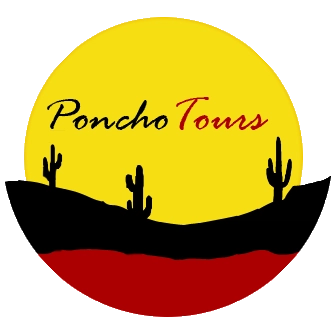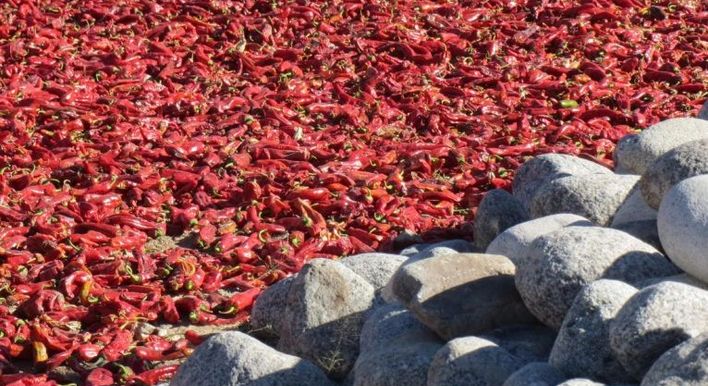The Wine Harvest Trail from Salta to Mendoza
A tour we think you'll love
I have just returned from a trip to Mendoza at the very best time of year: vendimia, or harvest time, when activity in the wineries is at its busiest, full of great smells and colour.
Our ten day Wine & History tour from Salta to Mendoza took the long way down, covering nearly 3,000km (twice as much distance as driving direct on the main roads: but who wants to do that?!)
I was joined by Fernando and Sue from Seattle, and Fernando’s sister-in-law Maria Eugenia from Rio de Janeiro. The Seattle residents have visited Argentina before, but this was Maria Eugenia’s first trip across the border, and she’s vowed to come back.
All three were particularly enchanted by the mostly boutique wineries we visited along the way, the personal touch that comes from meeting the small team at the sharp end of wine production.
We’ve had a very wet summer in parts, and generally cooler weather: while some wineries in Salta province were close to finishing the Vendimia, others in Catamarca and San Juan hadn’t even started. (I will report on the 2022 harvest in a future blog.)
Special mentions to:
- Andres Hoy at Burbujas de Altura in Cafayate, Salta (producers of the world’s first sparkling Torrontes). Sue said: “That’s was the best explanation of the process of wine-making I’ve ever heard.”
- Luis at Valle de la Puerta in Nonogasta, La Rioja, who kept the shop open well into Sunday lunchtime, allowing us to sample their excellent reserve blends of Malbec, Bonarda, and Syrah.
- Carlos Arizu at Cabernet de los Andes, who charmed Sue and Maria Eugenia in perfect English with his tales of working in the wine industry in California. Carlos is waiting for the full moon on Good Friday to harvest his flagship label Plenilunio: Malbec and Cabernet grapes picked at night when the sap rises to the grapes, investing them with maximum sugar, vigour and flavour.
My guests also loved the Malbec and Syrah blends from Don Diego.
Don Diego and Cabernet de los Andes (AKA Tizac Vicien, in honour of Carlos’ now deceased partner in winemaking, Pedro Vicien) are both in Fiambala (quechua for “windy place”) in the far west of Catamarca province, bordering sand dunes made famous by the Dakar rally, where the vines really have to fight to thrive, producing excellent fruit.
Also awaiting harvest, towards the end of March, in the Calingasta valley of San Juan, Luis received us at Alta Bonanza de los Andes with his customary good humour. They’re producing a particularly excellent Syrah.
As I tend to be driving on these trips, I’m still looking forward to trying Valle de la Puerta enologist Javier Collovati’s Malbec blend, and a Corbeau Noir, a French grape apparently very close to the Italian Bonarda.
After Malbec (obviously), Bonarda is the second highest produced variety in Argentina, and it works spectacularly well in La Rioja (Corbeau Noir, “black crow” in French, because of its intensely dark grapes, is sometimes labelled Charbono in the US). Still with me?
On the way back from Mendoza, my wife Alicia and I stopped in at Miguel Mas champañera, just off Route 40 between Mendoza and San Juan, where they make sparkling wine using the traditional champagne method, as well as a wide range of delicacies for the kitchen. We’ve already tried the organic Cabernet Sauvignon jelly on our roast.
We then explored the wine region of Zonda, between Pedernal, Calingasta and the city of San Juan, where we discovered this gem tucked into the hills: Apotema. The owner, Eduardo Ranea, is doing amazing things with a tiny production of seven hectares.
He’s planted Malbec, Cabernet Sauvignon, Syrah, Petit Verdot, Tempranillo and Viognier, deliberately choosing varieties that mature at different rates, so he can harvest each in turn with a small and trusted group of workers.
His latest blend of Malbec, Syrah and Petit Verdot was superb, really opening up during the tasting, and retailing at a ridiculous 900 pesos (US$4.50). “It’s drinkable, isn’t it?” he conceded, modestly.
His wife Sofia has built a small posada with only two rooms (sadly, occupied when we arrived, so I hope to return on my next trip).
While you’ll find Carlos Arizu’s wines in the US and UK, Don Diego in Brazil, and Alta Bonanza in Germany and the United Arab Emirates, both Miguel Mas and Apotema sell exclusively to visitors who venture to their winery: so you won’t find them in your local Oddbins or even in my Salta vinoteca. You’re best coming on a wine tour with us!






